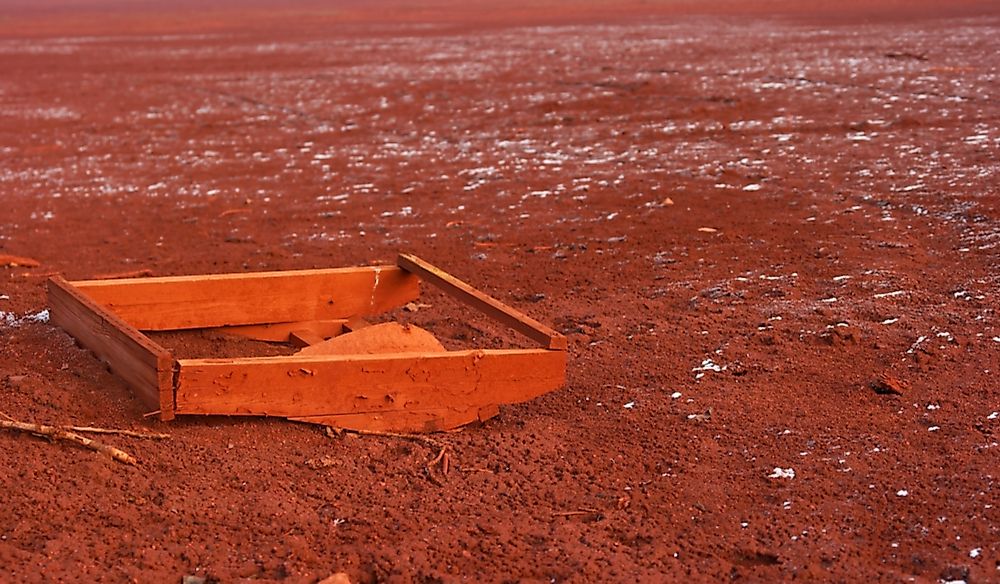What Are Bauxite Tailings Or Red Mud?

Bauxite tailings, more commonly referred to as red mud, is the waste substance which is created during the production of aluminum oxide. The material is called red mud due to its red color. Industry experts believe that more than 77 billion tons of the substance is produced each year. Management of this huge amount of waste is one of the biggest challenges facing the aluminum industry.
Composition of Red Mud
Research has shown that bauxite tailings are made up of a combination of metallic and solid oxides. The primary component of red mud is iron oxide which gives the substance its red color. Apart from iron oxide, other primary substances within red mud include titanium oxide, residual aluminum oxides, and silica. The quantity of the substances within the red mud depends on the quality of bauxite as well as the conditions used during the extraction process. Bauxite tailings are alkaline with a pH that ranges from 10 to 13 which is mainly due to a large number of metallic oxides in the compound. Red mud is considered toxic and dangerous to the environment mainly due to its alkalinity.
Production of Red Mud
Bauxite tailings are produced during the Bayer Process which is the most commonly used method of refining bauxite to aluminum oxide. Estimates indicated that roughly 95% of the aluminum oxide produced in the world was made through the Bayer Process. After the bauxite ore is extracted from mines, it is taken to a plant where it is refined. The process of obtaining the aluminum oxide requires high temperature and pressure. Sodium hydroxide is used to extract the aluminum oxide. The process produces a solid residue which is then removed. Some of the sodium hydroxide used in the process is left within the waste which raises its pH. The residue goes through several processes to recycle the sodium hydroxide and make the refining process as efficient as possible. Recycling the sodium hydroxide also lowers the alkalinity of the red mud which makes them safer to store and handle.
Disposal of the Red Mud
In the past, most companies dumped their red mud into lagoons and ponds some of which were created at the site of former bauxite mines. Most of the red mud that was thrown into the lagoons was at a concentration of approximately 20%. Other companies constructed dams and dumped the red mud within the dams. It was also common for companies to dump the tailings into rivers and seas through pipelines. Several governments around the world made it illegal for the companies to dump the red mud in the seas which stopped the practice. Companies were forced to adopt other methods of storage such as dry stacking. Through the method, the red mud is thickened to a point where close to 50% of it is made up of solids. The red mud is then deposited in a way that it can dry.
Uses of Red Mud
Red mud has a wide range of uses such as the production of cement and road construction. Red mud is also a significant source of iron.











